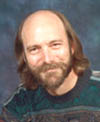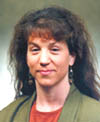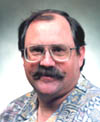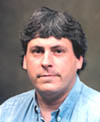UA Medical Anthropologists Seek Links Between Society and Health
by Lance M. Skelly

Health in human beings is strongly affected by culture and societal influences. From the social value of food to the impact of economic hardship on families, and from the existence of ancient battle wounds to discovering the presence of diseases long ago, medical anthropologists seek to find the clues and connections behind the overall health of individuals today and throughout history.
While anthropology typically evokes images of excavations and ancient artifacts, the specialized field of medical anthropology is a unique form of investigation into human existence. Incorporating the traditional aspects of anthropological discovery in the search for the relationship between human behavior, social life, and health, University of Alabama faculty members in the College of Arts and Sciences have conducted studies from Tuscaloosa to Hawaii, and from Samoa to South America. Funded with grants from organizations like National Geographic Society, the National Science Foundation, the Smithsonian and the National Institutes of Health, the UA faculty members’ efforts have spanned the globe.

According to Dr. Kathryn Oths, associate professor of anthropology to include the study of individuals, families and communities. Medical anthropologists may focus on prehistoric civilizations, primarily through the analysis of bones, or on living populations,” said Oths. “You can also look at it from a physical anthropological perspective — how biological parameters differ across groups, or from a cultural perspective, such as what do people believe and practice within different populations. We, in this department, come at the problem of health from somewhere in the middle — how cultural factors affect the biology of people and vice-versa.” Oths specializes in Latin America. Her interests include comparative medical systems, healers, health beliefs and health behaviors. She uses a combination of traditional anthropological methods and quantitative research designs in her work. Oths has conducted research on practitioner-patient interactions in a chiropractic clinic, healthseeking behavior in highland Peru, the social value of food in Brazil, and psychosocial factors in low birth weight in the southern United States.

Dr. William Dressler, a professor of anthropology and social work, focuses on illness patterns. “Why is it that you see some patterns of illness in certain societies and not within others? One of the more interesting subjects to me is the rate of heart disease, which is still the number one killer in the United States and Europe,” said Dressler, who is president of the Society for Medical Anthropology.
“Even though heart disease death rates have actually been dropping since the 1950s, why, and how did it initially get that way?” Dressler looks to different cultures as they have become more industrialized. “We have found that heart disease is actually a process of globalization. As a culture develops, heart disease rates increase, diets change, exercise patterns diminish and obesity increases. There is a cultural component that accompanies globalization — people may come to value particular kinds of foods to a greater degree, but those foods may not necessarily be good for them. Still, there are other contributing factors to the risk of disease that we haven’t yet defined very well,” said Dressler.

Dressler is currently working on a project funded by the National Science Foundation in collaboration with Brazilian researchers. He is gauging the continuing process of modernization in Brazil.
“What we are finding is that there are two competing ideals among Brazilians — a disagreement among the people between the traditional view of the extremely warm, fun-loving, sensuous individuals, and the new, ever-growing population of the serious, 9 to 5, individualistic working mentality,” said Dressler. “We are studying how Brazilians see their own culture — what does it mean to be a Brazilian? Where conflicts over cultural ideals such as these occur, it sets up the likelihood of both psychological and social stress, which in turn can be potent risk factors for disease. It’s interesting how these conflicting ideals play out in an individual’s life as it relates to the risk of disease.”
Oths recently developed a study of the health aspects related to the social value of food in Brazil. She found that in the South American country, many foods are considered luxury items and in the struggle to express a higher social status, poor individuals attempt to consume such foods, potentially leading to psychosocial stress. Many of the most desired and prestigious food items are also those that are the most unhealthy in terms of saturated fat.
Dr. Jim Bindon is a biological anthropologist who studies human nutrition, growth and health from the perspective of human adaptability. He has focused on the interactions between biology and culture, and, for more than 20 years, has examined the health repercussions of modernization among Samoans. Bindon, a professor of anthropology, has studied a variety of biological outcomes among Samoans such as infant and childhood health and growth, adult obesity and blood pressure, DNA polymorphisms and physique, and chronic diseases including diabetes and cardiovascular disease. He has related these health outcomes to residence in different communities, diet and activity patterns, education and occupation, and stress due to changing lifestyles as a result of modernization and migration. He has conducted similar research on bio-cultural aspects of health among the Mississippi Choctaw and in an African-American population in Alabama.
Bindon’s recent study in Samoa was done in collaboration with Dressler. The study looked at Samoans’ attempts to move from a farming and fishing economy into a more global, Westernized economic setting. The scientists studied the acquisitions of material goods by Samoans and their behaviors, and their ability to support a more Western lifestyle. One of the important factors studied was blood pressure in relation to stress levels reached in trying to obtain material wealth.
“We found that in some contexts, where there were individuals who were trying to acquire too much material culture, or live beyond their means, the stress and burden level could be detected by higher blood pressure levels. This also differed in households according to whether both spouses were working or not. There is a traditional division of labor where men essentially carry the status of the household and the material acquisition a male can display provides an external picture of the prestige of his family. So a lot of the burden falls on the men, and the biggest health impacts were found in them as they tried to obtain the big screen television, fancy cars and all the other Western gadgets and goods, without having income to support that.” Bindon also has done a similar study on local Choctaw Indians in their attempt to gain greater material worth, but he found that blood sugar levels, related to diabetes in the Choctaw, were affected, but blood pressure was not. He is currently consulting in a similar study in Hawaii, observing hotel workers of primarily Philippine backgrounds.
“That’s what is so fascinating,” said Oths. “That from culture group to culture group, what seems to be the most salient health problem can differ, and that it is culturally shaped too. Why is it diabetes here and heart disease there? It is part biology and part culture.”
While many medical anthropologists have worked diligently to find answers to questions facing today’s population, Dr. Keith Jacobi is engaged in finding clues to the past through the analysis of prehistoric human skeletons. Jacobi, an assistant professor of anthropology and curator of human osteology (the study of bones) at the Alabama Museum of Natural History, said a human skeleton possesses the clues to how a person lived … and died. “We’re able to learn how healthy a person once was, or how that individual suffered,” said Jacobi. “Examination of the human skeleton provides information on the age and sex of an individual, the height of the man or woman, and the injuries suffered either through daily occupational rigors or some sort of trauma incurred through warfare. In addition, we look for pathologies in the skeleton. These can be pathologies indicative of chronic diseases, agerelated diseases, or infectious disease.”
Jacobi has conducted archaeological fieldwork and done skeletal analysis on material from India, Peru, Barbados and the mid-western, southwestern and southeastern United States. Forensic analysis is also a research focus. Current projects include examination of prehistoric warfare, skeletal evidence of syphilis at contact, and anemia. Through human osteology, paleopathology (study of ancient diseases and causes) and dental anthropology, Jacobi has investigated culture clashes at the time of contact. He has found, for instance, the existence of treponemal disease — a form of syphilis — in ancient Native Americans’ skeletal remains, indicating that a form of the disease was here prior to European contact.
But the man who possesses the nickname “Bones” is not only involved in ancient discoveries. He is also a key player in state forensic activities, as he helps identify the final fates of individuals who have died, in some cases, either by accident or foul play.
“Again, skeletal remains plays a major role in determining how an individual may have died,” said Jacobi. “Through the use of DNA, a person’s identity can be revealed, and through other visible skeletal markers, it can often be determined how a person lived or ultimately died, and that is but one more aspect of telling the story of an individual.
“But medical anthropology spans from the cultural to the physical realm. You can look at pots, and artistic renderings, or gauge health and wellness based on social cues. Medical anthropology, however, runs the whole gamut in its attempts to tell the story of human life and existence.”